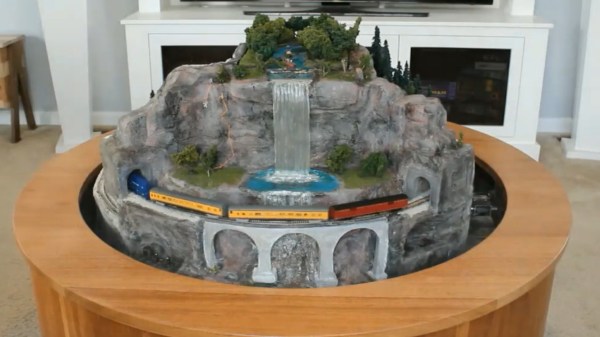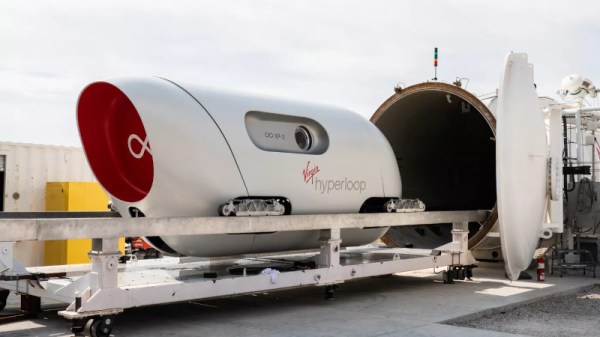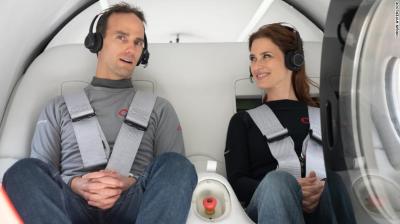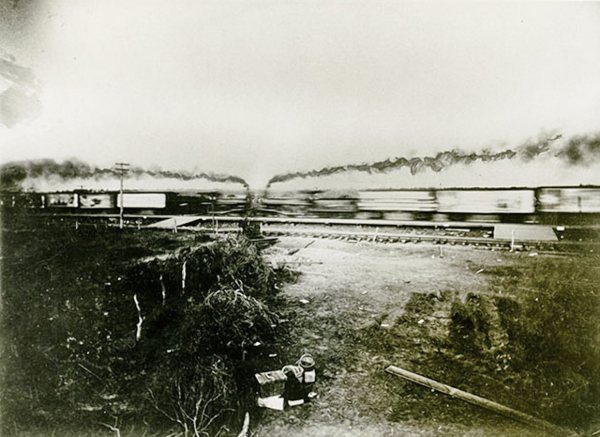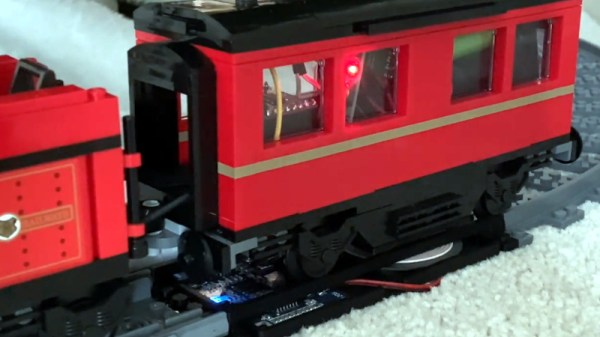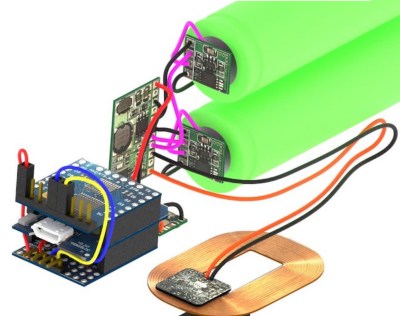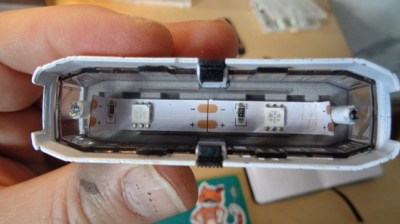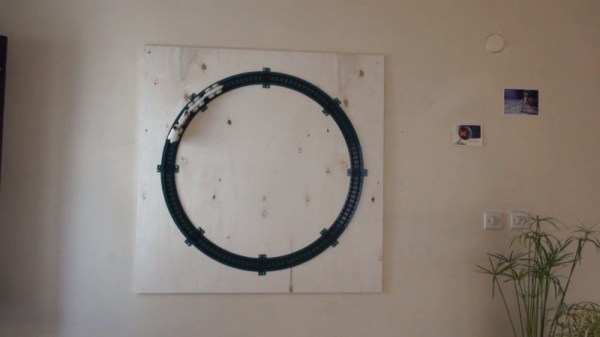The livingroom coffee table has long been a favorite realm of the model railroad. But what to do when you actually want to have coffee? [Peter Waldraff] has come up with a most eloquent answer to the problem by designing a coffee table model railroad capable of turning the world upside down.
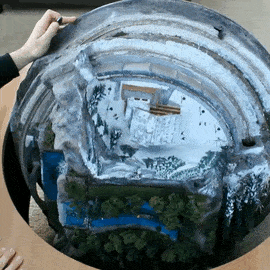 This isn’t [Peter’s] first rodeo. In his demo video below he shows off a coffee table train he built 20 years ago using a rectangular layout under glass. This time the circular design means a spherical volume can rotate around two skateboard bearing pivot points, revealing the mountainous scene on one side and the boring old wood table on the other. But what happens to the N-scale train itself when gravity is reversed? There’s a brilliant solution to that!
This isn’t [Peter’s] first rodeo. In his demo video below he shows off a coffee table train he built 20 years ago using a rectangular layout under glass. This time the circular design means a spherical volume can rotate around two skateboard bearing pivot points, revealing the mountainous scene on one side and the boring old wood table on the other. But what happens to the N-scale train itself when gravity is reversed? There’s a brilliant solution to that!
The frame of the coffee table includes an outer loop for train storage. Before flipping the model upside-down, the train itself is sent to this siding for safe keeping. In an earlier build video we can glimpse the latching mechanism that uses a solenoid and is actuated by a magnet in the center of the table. A clever use of toggle bolts (sometimes known as butterfly anchors for securing things on drywall) has them transfer power to the outer ring of storage track when their spring-loaded arms come in contact with some screw heads on the other side of the gap. The source of the electricity is a rechargeable Makita power tool battery in a hidden chamber within the mountain.
Of course we’ve seen other hideaway coffee table trains like this lovely hand-carved version. But you have to admire how [Peter] managed to incorporate everything into a self contained unit here, without the needing to store a removable cover. If you are someone who wants to always show off your handy work, that’s where a perspex box coffee table design comes into play.
Continue reading “Coffee Table Railroad Flips To Hide The Fun”

